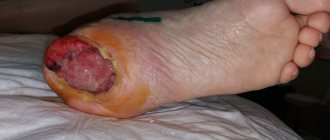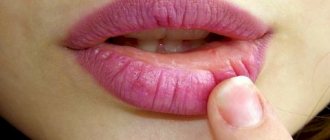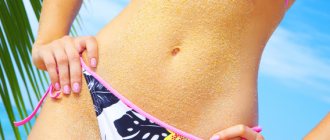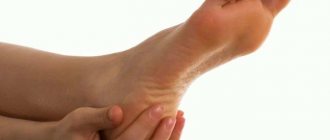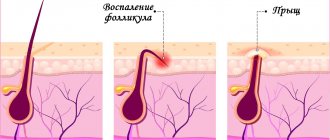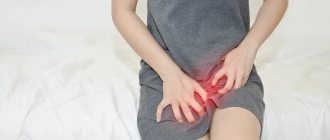Hyperkeratosis is a thickening of the outer layer of the skin. It is formed in response to skin injury as a protective reaction or when the process of epidermal cell division is disrupted against the background of certain skin diseases. The rough layer consists of keratin protein, which has rigidity and high strength.
This protein protects underlying cells from damage. When there is inflammation, irritation or mechanical pressure on certain areas, the production of keratin in them increases.
Is there a solution?
When it comes to preventing calluses and rough skin, the best solution is to choose comfortable shoes.
When choosing your next pair, make sure there is space between the top of your big toe and the toe of the shoe. Also try to choose shoes in the evening - it is known that feet can get a little larger in the evening. To get rid of rough skin quickly and with minimal effort, you can use an electric file with an abrasive coating from Scholl.
This file with a rotating roller attachment allows you to remove corns and rough skin. The file has three attachments, each of which is suitable for different degrees of skin thickness, which will allow you to cope with even the most severe dry calluses.
Why does it happen?
Hyperkeratosis is provoked by chronic inflammatory processes on the skin, infections, ultraviolet radiation, and exposure to aggressive chemicals. If the thickening has formed without prior irritation or injury, then it is probably caused by hereditary diseases.
Under the influence of external factors, and not internal diseases, hyperkeratosis most often affects the feet.
This is facilitated by:
- improperly selected shoes (tight, chafing, inappropriate in size, with heels, made of artificial materials);
- being overweight or tall, creating a lot of pressure on the foot;
- foot deformities (flat feet, club feet), gait disturbances;
- diabetes mellitus with loss of pain, tactile sensitivity of the lower extremities, impaired nutrition of foot tissues;
- fungal infection;
- deficiency of vitamins, minerals;
- dry skin;
- injuries;
- standing for long periods of time during the day.
A rather unpleasant, painful condition is hyperkeratosis on the heels. It leads to disruption of the integrity of the skin, the formation of cracks, and limits physical activity and ability to work.
On the skin of the hands, the cause of hyperkeratosis is often sports training (exercises on the horizontal bar, uneven bars, lifting weights, playing tennis, badminton), playing musical instruments (guitar). And also work without protective gloves in the garden, features of the profession (carpenter, painter, mechanic).
Cracked heels: cosmetic defect or serious problem?
Many people, especially women, complain that cracked heels interfere with an active life, wearing nice shoes, and sometimes even the slightest heel crack can cause severe pain. This is not only a cosmetic defect, but a prerequisite for the development of serious pathology in the body. Therefore, it is very important to take timely measures and contact a specialist. In this article we talk about why cracked heels can form, what their danger is, where to start treatment, and what measures are most effective in combating cracked skin on the feet.
Why do problems with rough skin on the feet and cracked heels occur?
The skin of the plantar surface of the feet is thick, hairless and rich in sweat glands. Also, healthy skin on the heels should be elastic. A distinctive feature is that this area has the thickest surface layer of skin. In places that serve to support bones (for example, in the heel area), there is well-defined subcutaneous fatty tissue that protects the bone from external pressure.
Being subjected to constant stress, which increases significantly with foot deformities, wearing uncomfortable shoes, during active sports, i.e. in response to a mechanical effect on the skin of the feet, a response occurs in the form of increased cell division in the surface layer of the skin. Ultimately, this leads to the development of hyperkeratosis - thickening of the superficial stratum corneum. The skin of the feet becomes harder, less elastic, and its sensitivity to external influences decreases. Thus, the properties of the skin change.
What can cause cracked heels?
Frequent causes of cracked heels are fungal infections of the skin of the feet, allergic diseases, eczema, psoriasis, and various types of keratoderma. This may also be a consequence of mechanical influences: wearing tight or uncomfortable shoes, walking for a long time. If a person spends all day on his feet, they swell, blood circulation is impaired and, as a result, the condition of the skin of the soles and heel area suffers. A lack of vitamins or an excess of them can also negatively affect the appearance of the heels. Cracks in the heels can appear due to impaired metabolism, diseases of the endocrine and cardiovascular systems.
Are these troubles really that serious?
The appearance of cracks is accompanied by severe pain, which reduces the ability to work and limits the possibility of active sports. Cracks are dangerous, first of all, because they are “gates” for the penetration of pathogenic microorganisms, which can cause inflammation and lead to many undesirable consequences.
What is the correct, and most importantly, effective treatment?
Before starting treatment for cracked heels, it is necessary to find out their cause, consult with a dermatologist, and carry out the necessary laboratory tests. Treatment must be specialized, since in the presence of skin diseases, even the most thorough heel care will not give noticeable results. For example, foot fungus is treated with special antifungal drugs, which only a specialist can help you choose. If the cracks were caused by improper care or wearing bad shoes, you should try to change the conditions that contributed to the disease.
What can you recommend for caring for your feet at home?
All home treatments are effective in cases where dry skin on the heels is not associated with any disease. At home, baths of soap and soda help soften and cleanse the skin best: for two liters of hot water you need to take a tablespoon of soda and a tablespoon of soap. The duration of the procedure is 15 minutes. Immerse your feet in the bath and massage your heels a little, without making much effort.
To combat rough skin on the feet, ointments containing 15-20% urea and 5% salicylic acid are used. They moisturize the skin and soften it. To heal cracks, you can use drugs with methyluracil, vitamin B5, and antimicrobial action. To prevent cracked heels, you should also moisturize the skin with warm olive oil, massage, and use a rich cream or ointment with Vaseline.
It should be remembered that these simple tips will only help in properly caring for the skin of your heels. However, only a qualified dermatologist can determine the true causes of skin changes.
You can get full advice on the diagnosis, treatment and prevention of cracked heels from dermatologists at the Vita Medical Center. Our specialist will study each individual case and offer the most effective preventive and treatment measures.
How to deal with rough skin on your heels
The basic steps for treating rough or “stiff” heels include cleansing and exfoliating dead and uneven skin, as well as intensive hydration and repair. Now we will tell you step by step how you can care for rough skin on your heels.
Cleansing and exfoliation
Intensive cleansing and gentle exfoliation is one of the daily beauty routines for caring for rough skin on the heels. Look for cleansers that don't damage the skin's protective barrier and help keep it hydrated.
For example, CeraVe SA Soothing Cleansing Gel for Dry, Rough and Uneven Skin contains:
- ceramides, which help maintain skin protective properties;
- salicylic acid, which delicately exfoliates rough and uneven skin;
- hyaluronic acid, which moisturizes the skin and helps retain moisture in its top layer.
SA Softening Cleansing Gel
For dry, rough and uneven skin
Gently cleanses and exfoliates dry, uneven skin without damaging its protective barrier.
236 ml
More details
CeraVe softening cleansing gel helps to gently cleanse rough skin on the heels and exfoliate dead particles, promotes renewal, maintaining noticeable softness and smoothness of the skin. In addition, it supports the skin's protective barrier, helping it resist the negative effects of external factors.
Hydration and restoration
This is the next basic step and also helps solve the problem of rough heels. How to get rid of the possible feeling of tightness or hardness of the skin that is characteristic of rough skin on the heels? You can choose a revitalizing foot treatment that will give you a long-lasting feeling of softness and hydration.
The CeraVe Restoring Cream for Dry Foot Skin boasts these properties. It includes:
- ceramides, which help restore the skin's protective barrier;
- ammonium lactate, which gently exfoliates dead skin cells;
- hyaluronic acid, which helps maintain skin hydration.
CeraVe Revitalizing Foot Cream visibly softens and moisturizes the skin of the heels, promoting its renewal and restoration.
Revitalizing foot cream
For dry skin
Effectively exfoliates and moisturizes chapped foot skin without irritating it.
88 ml
More details
SA CeraVe Softening Cream for very dry and rough skin has a similar effect. It contains not only the already mentioned ceramides, but also salicylic acid and urea, which provides intense hydration to the skin and helps retain moisture. This cream is suitable not only for the feet, but also for the skin of the body - if you are facing similar problems of rough skin not only in the heels and feet.
SA Softening cream
For dry, rough and uneven skin
Exfoliates and softens dry, rough and uneven skin. Helps restore the skin's protective barrier.
More details
Why can the skin on the heels become rough?
Rough skin on the heels is a nuisance that can overtake us anywhere and at any time of the year. What does this depend on and what factors can cause roughening of the skin on the heels? Let's look into it in detail.
Features of the skin in the heel area
First of all, it is important to understand that there are no sebaceous glands on the skin of the feet (what is often colloquially called “on the soles of the feet”), including on the heels. The structure of the skin in this area is prone to hardness, dryness and, in the absence of properly selected care or adverse effects of external factors, to rapid coarsening.
Removing rough skin
Often girls who complain about rough skin on their heels have an irresistible desire to “remove excess layers”, “remove dead skin”... And they resort to radical removal of rough and uneven skin using, for example, a razor, pumice stone or excessively intense scrubbing.
Unfortunately, such methods can injure the skin, turning the problem into a vicious circle. Intensive attempts to get rid of rough skin on the heels sometimes lead to the fact that it quickly grows back, is unevenly renewed and can lose its protective functions, which leads to increased vulnerability of the skin to external factors.
Wrong selection of shoes
Wearing shoes that are too tight, ill-fitting, or too loose can also cause your heels to feel rough or “too hard.” This occurs due to the constant pressure of shoes on the skin and/or excessive friction of shoes on the skin. So if your heels suddenly feel rough, check how comfortable your feet are in your current pair of shoes?
Lack of hydration
In this case, we are talking not only about the selection of skincare products, but also about the level of humidity in the premises. The heating season and temperature changes during the cold season, air-conditioned dry air in the summer and the lack of moisturizers in foot care rituals can also lead to dry skin and subsequent thoughts about how to get rid of rough skin on the heels...
